
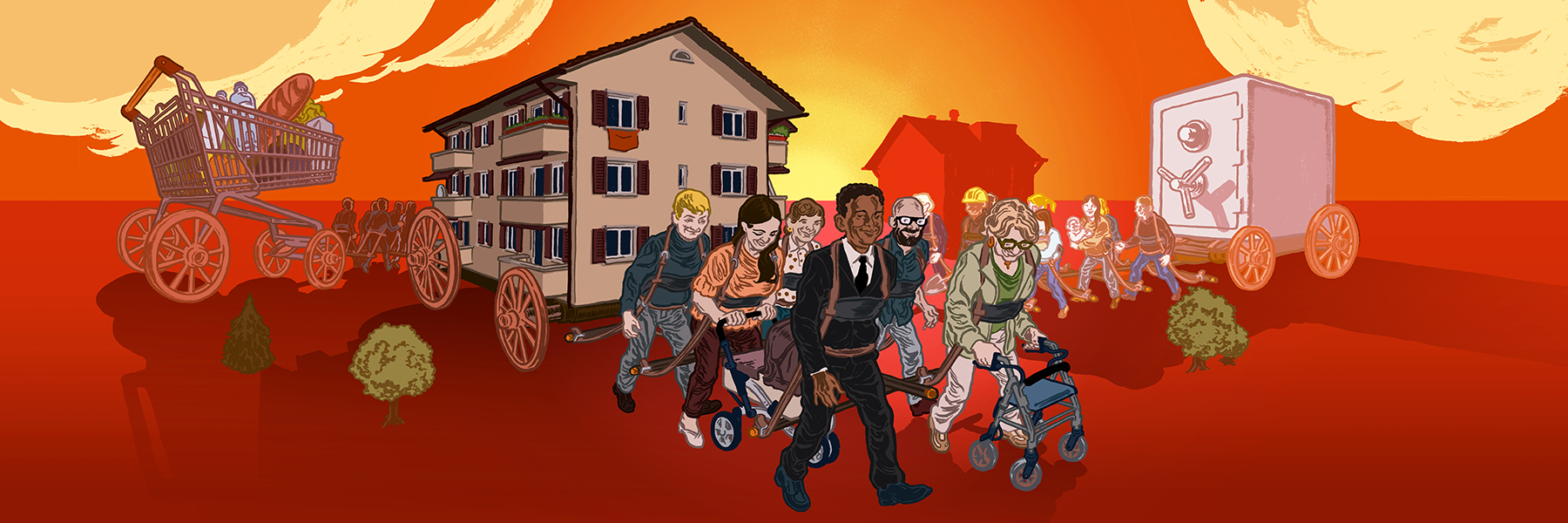
Switzerland: the land of cooperatives
The cooperative business model not only permeates the Swiss economy, but also forms the roots of its politics.
Almost all Swiss people buy their groceries at a cooperative. Many have an account at a cooperative bank. The largest animal-feed producer, the largest car-sharing company, and even parts of the public media in Switzerland are all organised as cooperatives.
Meanwhile such models play a key role in providing affordable housing in Swiss urban centres, including in pricey Zurich; they also create hundreds of thousands of jobs across the country.

More
The Swiss start-ups embracing the cooperative model
What are they?
But what distinguishes cooperatives from other companies? In cooperatives, all members have an equal say. As in a political democracy, the principle of “one person, one vote” applies. By contrast, in limited companies, one person holding 51% of the shares would have a majority vote.

More
Working as a lobbyist for a Swiss supermarket giant
Cooperatives also tend to bring together members with a common practical or idealistic goal. Instead of being paid to outside investors, the profits of cooperatives flow back into the business or are distributed equally among members.
More
In some cooperative projects, such as the agricultural schemes of Longo Maï, founded in France in the 1970s, cooperative living encompasses all areas of life.
Communal life in the Freidorf (Free Village) near Basel was of a similarly experimental nature, at least in its first decades. There, starting in the 1920s, managers and employees of what became today’s supermarket chain Coop lived next door to each other. Altogether they occupied 150 houses. They did their groceries in the village-owned shop and saved together for their pensions. The cooperative concept permeated all aspects of their lives.
And it paid off: in the first few years, the inhabitants paid CHF850 ($906) to rent a house and received CHF200 from the profits of the cooperative shop.
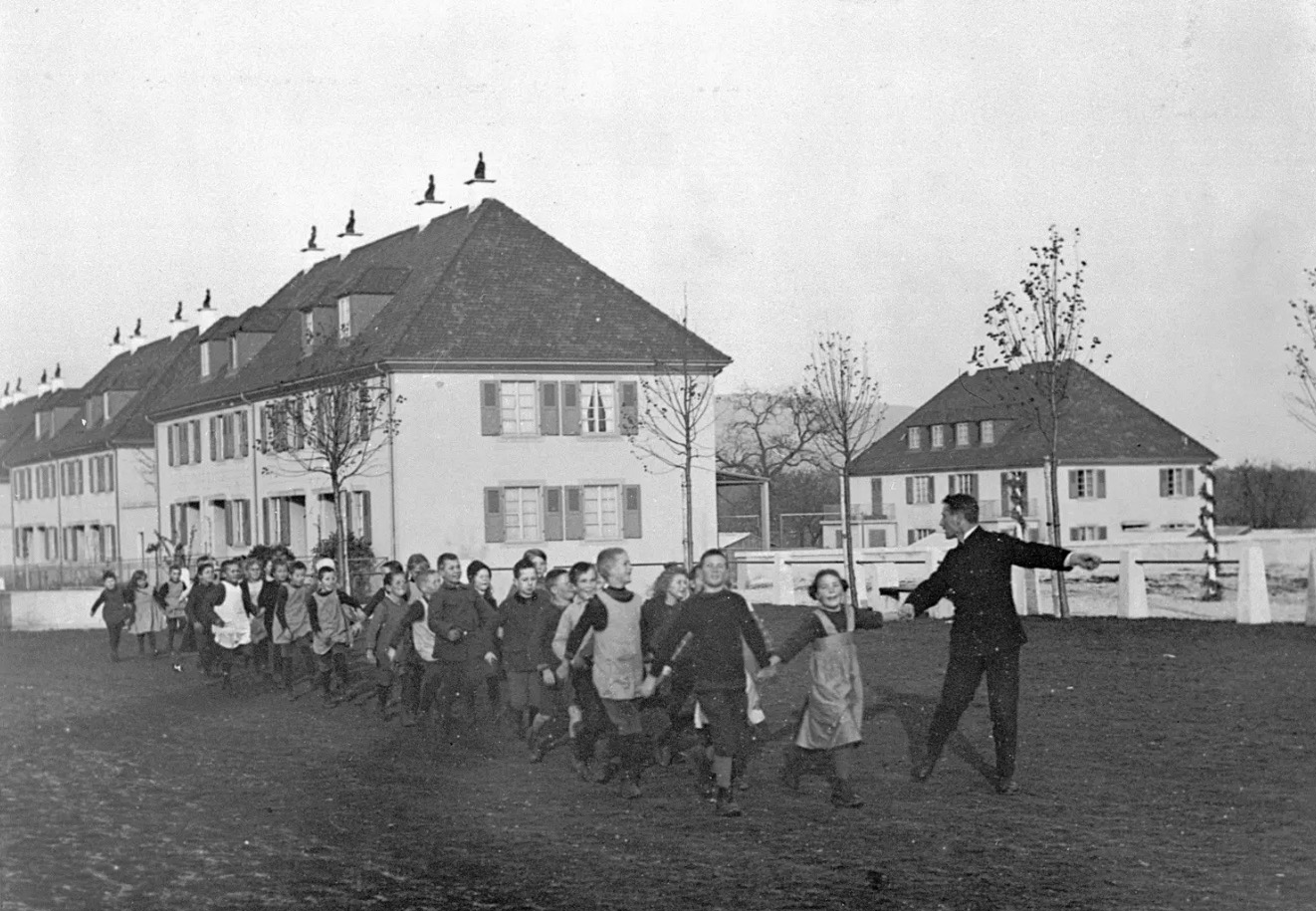
More
How an experimental housing model pushed communal living to the limits
To this day, housing – and low rents – remains the purpose of many cooperatives. In Zurich, where flats are scarce and costly, around one in every five apartments is owned by a cooperative. And in comparison to the overall population, such flats tend to be home to more single parents, fewer academics, and fewer immigrants from neighbouring European countries, according to a 2017 studyExternal link.
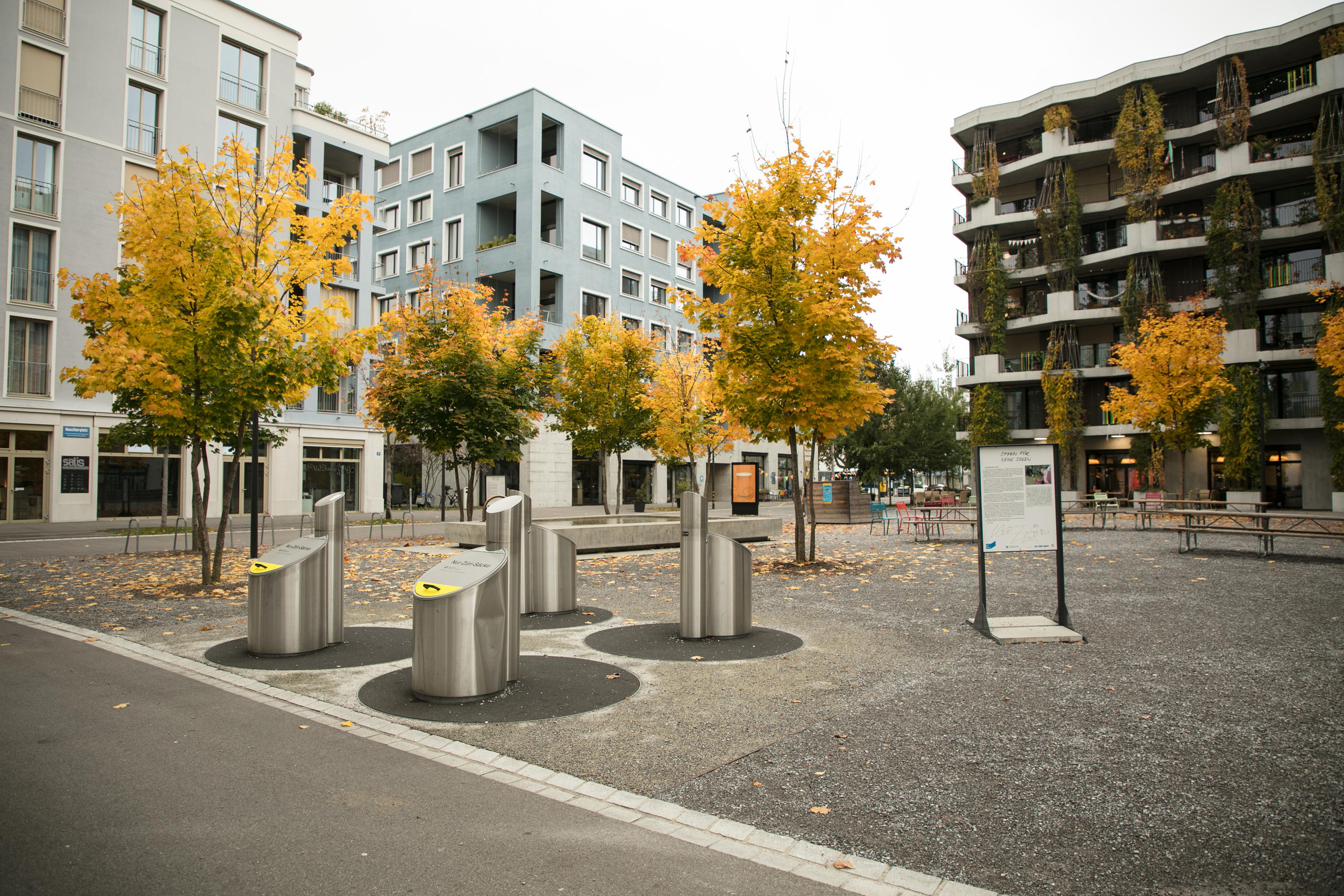
More
Cooperative living: a hip alternative for the Swiss

More
Homeless to hip: How Swiss housing cooperatives developed
Important economic impact
Globally, an estimated three million cooperativesExternal link accounting for around 10% of all jobs in the world.
In Switzerland, according to the trade register, there are some 8,100 cooperatives currently in operation. In comparison to other European countries, that’s not a huge amount. But the picture is different when numbers of members are factored in: the two retail giants Coop and Migros, which are run as cooperatives, both have around 2.5 million members – in a country of nine million.
According to a 2024 reportExternal link, the number of such organisations is less relevant than their “impact on jobs and economic growth” – which is where Swiss cooperatives really show their influence.
In 2022, the ten largest cooperatives in Switzerland were behind 10.6% of the country’s entire economic output. Switzerland is a country of cooperatives, and has been for longer than there have been modern companies.
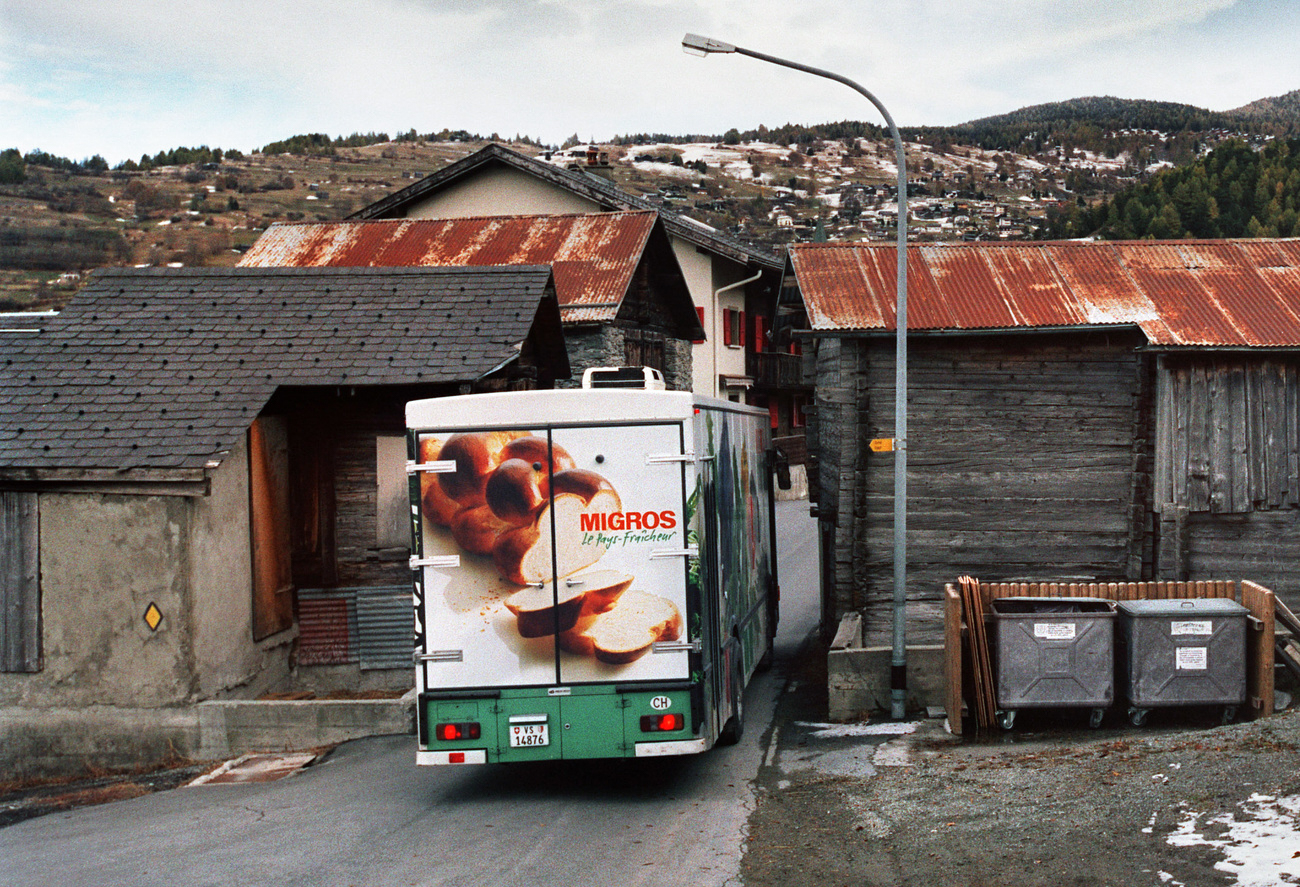
More
The history of the Swiss retail giant Migros in pictures
The primordial soup of Switzerland
The Aargauer Zeitung newspaper once calledExternal link cooperatives the “primordial soup of the Swiss economy”. They could also be declared the primordial soup of the country’s political life.
Switzerland sees itself as a state united not by its linguistic or cultural singularity, but by the very fusion or coming together of its various parts and peoples. The official name of the country in German – the Swiss Confederation – also hints to this.
Early forms of cooperatives in many Swiss regions were also concrete precursors of how the state would be organised.
Centuries ago, pasture and forest land were jointly managed in so-called “cooperative societies and corporations”. One such scheme for managing water and pasture land even gained international fame: the agreement made by farmers in the canton Valais village of Törbel in 1483 was included in Elinor Ostrom’s research which was honoured with the Nobel Prize for Economics in 2009.

More
The Swiss mountain village that inspired a Nobel Prize and digital governance
At an event in spring 2025, Swiss Environment Minister Albert Rösti declared the principles which Ostrom defined for dealing with common goods – including the ability to adapt to local conditions and defining clearly users – to be “pillars of Switzerland”.
Such cooperatives marked the beginning of political communities: villages and municipalities later developed out of them. The remit of the cooperatives grew gradually from water supply and justice to, eventually, care of the poor. In these cooperatives, people lived “direct democracy in its purest form”, historian Hans Stadler said.
Then from the 1830s, farmers, artisans and workers in Switzerland came together to form “bread and fruit associations”. In the next decades, the Swiss cooperative movement developed in the wake of the international movement with origins in Rochdale, England.

More
The Swiss who taught Americans about direct democracy
These pioneers believed they were following in the footsteps of Switzerland’s older cooperative tradition. The “cooperative” has existed as a form of business under Swiss law since 1881.
International Cooperative Movement
In 1895, participants from 13 countries launched international organisations of the political cooperative movement. Delegates from Switzerland travelled to the founding congress of the International Cooperative Alliance (ICA) in London.
In Switzerland, cooperatives mainly developed in the agricultural, banking, and construction sectors. Consumer cooperatives played an essential role in the economy, in addition to forming the backbone of the political cooperative movement.
Around 1900, the worldwide cooperative movement developed into a pacifist and internationalist force which, according to historian Rita Rhodes, managed to keep its distance from warring countries even during the First World War.
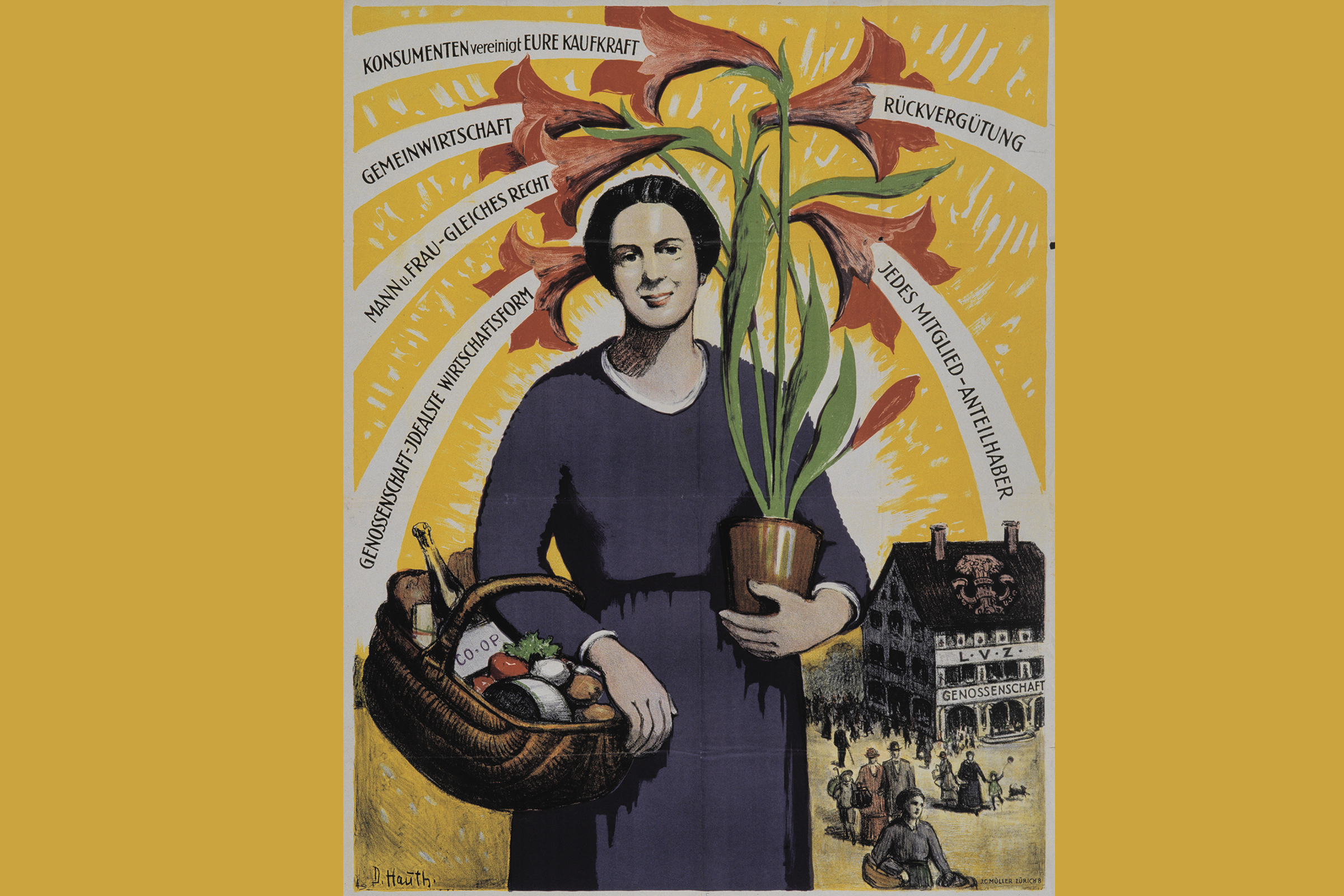
More
When cooperatives wanted to prevent a world war
Cooperative comes from cooperation. At the Cooperative Congress in Basel in 1921, the delegates of the League of Nations declared that the international organisation was pursuing the same goals as the cooperative movement.

More
How a small cooperative extends a lifeline to Swiss abroad
From 1982 to 2013, the International Cooperative Alliance had its headquarters in Geneva. It is now based in Belgium. The United Nations, like the League of Nations before it, maintains a bond with cooperatives: following a decision of the General Assembly, the UN has celebrated the International Day of Cooperatives at the start of July each year since 1995. In 2025, it has even designated the entire year as the “UN International Year of Cooperatives”.
Cooperatives today
The Swiss consumer cooperatives were once driven by a vision of a different society. There is hardly a trace of such political visions left in today’s retail firm Coop. Together with its rival Migros, which is also a cooperative, the companies enjoy a market share of more than two-thirds of food sales in Switzerland.
Both supermarket chains still champion cultural or political causes today – but they are primarily big businesses. Migros is celebrating its 100th anniversary in 2025, but is also laying off hundreds of employees, after a 2024 which the Neue Zürcher Zeitung paper described as “perhaps the most difficult year in its history”.

More
The history of the Swiss retail giant Migros in pictures
Among smaller cooperative projects, many are still driven by idealism, such as participative shops where members want to democratise economic processes.
Edited by David Eugster. Adapted from German by Sue Brönnimann/dos

In compliance with the JTI standards
More: SWI swissinfo.ch certified by the Journalism Trust Initiative

























